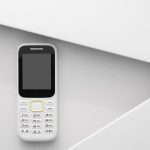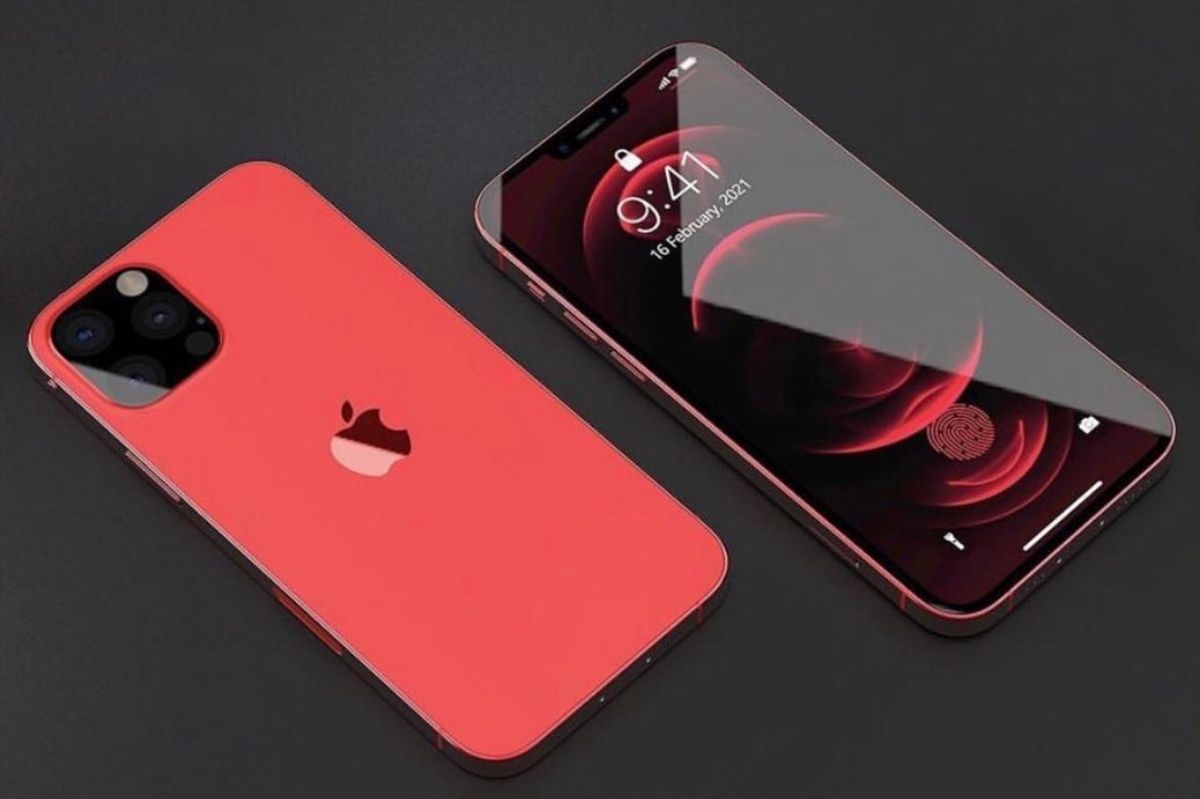Like every year, after the launch of an iPhone there is not even time to enjoy it, which is already starting to talk about the next one, so what we could imagine will be called iPhone 13. Even for the beginning of 2021, in fact, there is no shortage already, albeit several months after the release, rumors, and rumors about the next phones.
In large part, for now, these are inventions, in other cases, assumptions based on the logic and history of Apple. However, there is no lack of real indiscretions that come from sources that have proved reliable in the past.
Trying to focus on the latter, it must be said that there is no shortage of those capable of giving an idea of what the iPhone 13 will be. iPhone 12, launched last year, represented an important update, the main one for several years now, probably since iPhone 6 launch in 2014. Apple with iPhone 12 changed the design, introduced 5G and the Magsafe system which should give rise to a new ecosystem of magnetic coupling products.
It is difficult, if not impossible, that the iPhone 13 could represent such an upgrade but certainly, there will be news: we are talking about a 120 Hz LTPO display for both Pro models, improved battery life thanks to a 5G modem more efficient, as well as substantial updates to the main camera, and rumors (which are losing speed, as we will see) for a LiDAR sensor on the iPhone 13, and cheaper iPhone 13 mini and finally important news for the biometric security system.
Table of Contents
The Name Of The Next iPhone (Maybe) 13
Any article like this can only start with a little dissertation on the name of the next iPhone. For two years now, Apple has decided to use simple numbering, so that from iPhone X (iPhone 10) we moved on to iPhone 11 and then to iPhone 12 (even if iPhone XR and iPhone SE got in the way). This is why most websites and newspapers assume that an iPhone 13 will arrive in the fall.
However, it should not be forgotten that until the launch of the iPhone 8 which followed the iPhone 7, Apple alternately named its iPhones with a number. followed by a number followed by the letter “s”. iPhone 3G and then 3Gs, iPhone 4 and iPhone 4s, iPhone 5 and iPhone 5s, and finally iPhone 6 and iPhone 6s. The hypothesis of an iPhone 12s could therefore not be completely ruled out also for reasons … superstitious. The number 13 is considered unlucky in several parts of the world, including the United States and Great Britain.
How Many iPhones 13?
If until a few years ago the norm were only two iPhone models, a standard and a Pro (whatever the names of these two models were), in recent years Apple has continued to expand its proposal by accepting the expectations of an increasingly large number. vast of customers.
The climax, for now, took place this year with a low-cost model ( iPhone SE ) launched in spring and 4 other models presented in autumn. Apple for iPhone 13 is expected to follow the current track, with the release of four different models, two standards, which could be iPhone 13 mini and iPhone 13 in addition to the two iPhone Pro, iPhone 13 Pro (which would follow iPhone 12 Pro) and iPhone 13 Pro Max (heir to iPhone 12 Pro Max ).
Around this assortment hovers the doubt of the fate of the mini. According to many sources, the sales of this model would be under the hopes of Apple so much so that Apple would have ordered a reduction in production, so the cancellation of the “pocket” form factor for the year 2021 may not be completely excluded. In reality, the thought of those who believe that the mini can still be given a chance is perhaps more plausible. Even the worst products at Apple are (almost) always a second chance.
iPhone 13 Design And Technologies
As mentioned this year, Apple has substantially changed the design of the iPhone. For this reason, it does not seem appropriate to expect changes in style for the iPhone 13 and so do the authors of the numerous renderings found on the net (one below created by Everything Apple Pro).
In addition to the reduced notch, there are some hypotheses on refinements of some aesthetic details. One of these is color; we should expect a matte black model and perhaps a bronze-colored version. A significant update should come in the treatment of glossy edges; iPhone 12 Pro has been heavily criticized from this point of view because it is marked in an unsightly way by fingerprints.
The rendering of the iPhone 13 according to Everything Apple Pro
One hypothesis is that iPhone 13 may be slightly thicker than iPhone 12. However, there is talk of fractions of a millimeter, indispensable if Apple, as it seems, will improve the components of the cameras. As we explain in detail below, iPhone 13 should have new sensors and new stabilization systems. This would force the engineering department to modify the phone case.
Here’s what an iPhone 13 should look like in profile. Note the larger camera block
Farewell To Lightning?
Rather the possibility begins to hover but perhaps it would be better to say the theory that with the iPhone 13 Apple can say goodbye even to the last connector, the one where the
Lightning plug is inserted.
The first rumors that referred to the iPhone 13 as the first phone without ports date back as far as last spring but now there are rumors about the experimentation of an indispensable function: the recovery of the operating system through the internet.
We specify that the “Internet recovery”, which has been present in macOS for years, does not automatically mean that the Lightning port is canceled, but only that Apple is exploring and laying the foundations for this option.
At the moment the difficulties that can be glimpsed behind this design choice, such as much slower synchronization and charging, are greater than the advantages which essentially consist in better water-resistance of the device and the simplification of the components.
After all, Apple could not completely give up a physical access door perhaps hidden like that of the Apple Watch, for diagnostic and emergency recovery reasons. At the moment, therefore, we tend to consider the cancellation of Lightning unlikely at least for iPhone 13.
After all, the most reliable of the analysts in the Apple world, Ming-Chi Kuo says that the current Lightning port is here to stay and that USB-C will hardly be adopted for strategic reasons. It is possible, rather, that Apple can put the Magsafe back into circulation in a revised and corrected version intended for the iPhone.
We are not just talking about the charging system that Cupertino launched this year, but about a connector that is also capable of synchronizing the iPhone while remaining firm, as did the MacBook charging system, through a magnet.
Smaller Notch
Apple knows that the notch is a problem both for cleaning the front of the display and for viewing the screen that stops awkwardly at the notch and for this reason, it is studying every option to delete it.
When it comes to the iPhone 13, the theme of the panel that contains the cameras and sensors for Face ID is always in the foreground. For now, there is no talk of abandoning the current technology called “Structured Light” in favor of Time Of Flight technology, which is easier to build.
For this system that provides for the adoption of a LIDAR sensor across the range, it should be talked about in 2022.
The most immediate hypothesis is the reduction of the size, by combining the infrared illuminator, the sensor, and the projector of points currently separated, which constitute the Face ID unlocking system; all these elements could be merged into a single module. With two fewer sensors, therefore, the front notch would certainly be narrower. It is also possible that the notch can become lower by moving the receiver more towards the top edge of the phone.
In this image of an iPhone 13 replacement screen published by MacRumors but coming from a
Greek repairer, you can see the smaller notch
The fact that the notch can get smaller is starting to be a near certainty. There are several images in circulation (one above) showing protective glass coming out of Chinese factories, always very… proactive when it comes to accessories, from which it is clear that the cutout will be smaller.
In the photos above, you can see the repositioning of the components in the iPhone 13. This will reduce the size of the notch
Among the sources that mention the reduction of the notch is DuanRui, a leaker who previously correctly anticipated the names of the iPhone 12 range and also an iPad Air 4 manual page that showed the design.
What you notice (photo above) is that the reduction of the notch comes essentially from the repositioning of the components and in particular from the movement of the speaker in the frame and from the movement to the left of the front camera.
For now, in any case, there is no mention of eliminating the notch. This should happen, according to Ming-Chi Kuo, in 2022 iPhone 15 of 2022 when Apple will abandon the notch for a design with a single compact hole in the display, (in English punch-hole) while only in 2023 the iPhone 16 of 2023 Apple could present the first iPhone with front full screen integrating Face ID sensors, camera, and other sensors all under the display
Also Read : AirTag Review: You Can’t Miss It If You Have An iPhone
The Return Of Touch ID
According to a Bloomberg report, Apple is also working hard to offer in addition to FaceId a fingerprint sensor under the display of iPhone 13.
Even Ming-Chi Kuo, usually a very reliable analyst, believes that the new iPhone may have a good chance. to have the combination of these two biometric systems.
Touch ID under the screen for iPhone 13?
Face ID and Touch ID would solve (without forcing Apple to abjure FaceID) the inefficiency caused by the current health emergency, of unlocking while using a mask. Apple has already taken action on this, updating iOS to recognize the user even when his face is semi-covered, but it is required to wear the Apple Watch.
The scenario of a return of TouchID is also indirectly confirmed by Apple; It can also be understood from the fact that lately through a survey the company is asking its customers what they think of this technology.
It is therefore not surprising that the number of rumors about it is crowded. That Touch ID is on its way to the next flagship iPhone is supported by the WSJ, for example. The financial journal anticipates that Touch ID will be used as a complementary unlock option.
Even Barclays analysts, who had predicted the farewell to the charger in the box, the use of True Tone on the iPhone 8 and iPhone X, the removal of the audio jack, and the 3D Touch on all iPhones since the launch of the iPhone 11, think the same thing. The one reported is actually a further confirmation of what was discovered last July and then reiterated in October by a leaker.
A patent unearthed by AppleInsider in recent months explains how Cupertino might be able to do it thanks to a sophisticated in-display system that uses a series of microlenses to focus the fingerprint.
In reality, it must be said that a more immediate goal would be the use of the reader in the side button, as already happens in the iPad Air. In this case, the iPhone would be unlocked by touching the button on the side, although a serious problem in this scenario is the cases that practically cover all the side buttons.
Leaving it free would be possible in a scenario where Apple decides to use it as a sensor, but it would be an insurmountable problem for rugged cases or the many, including Apple, that aim to present a linear and protective design in a time.
Dimensions And Battery
According to some sources, iPhone 13 could be slightly thicker, so as to accommodate a higher capacity battery. To reach the goal, Apple could for the first time adopt what are called soft board batteries, or based on a technology that allows reducing the number of layers inside the accumulators by optimizing thickness and capacity.
Although these batteries can theoretically also allow you to reduce the thickness of the phone while leaving the autonomy unchanged, the forecasts are those of an iPhone slightly heavier and with the same thickness. To assign more space to Apple batteries, indeed, it would also be working to integrate the SIM slot with the motherboard and to reduce the thickness of the Face ID module.
Increasing the battery capacity and overall greater energy efficiency of the phone is imperative for Apple. As we explain elsewhere in this article the 120 Hz screen will eventually consume more power; at the same time, it will become more intensive and widespread than 5G, a very problematic technology in terms of energy absorption.
The iPhone 13 Screen
If Apple continues to release four different iPhone 13 models, it’s pretty much certain that the displays will be 5.4in, 6.1in, and 6.7in, just like the current range. The novelty should come from the 120 Hz refresh rate for the 6.1-inch iPhone 13 Pro and 6.7-inch iPhone 13 Pro Max. This will allow for smoother scrolling and better quality in the gaming sector, and in video playback.
A screen with a higher refresh rate also helps to provide the feel of a faster phone.
An iPhone 13 without a notch; a somewhat imaginative but tempting hypothesis
This rumor has been given credit by multiple sources, some of which have added that the iPhone screen will be able to adapt the refresh rate, so as to reduce it to save battery when having 120 Hz is not useful. Recall that high battery consumption is one of the problems generated by screens of this type and probably the reason why Apple did not introduce 120 Hz on the iPhone 12.
Again, the nature of an LTPO panel will result in no need for add-ons under the display to enable an adaptive refresh rate – this could result in thinner phones, although a battery boost could push for the opposite effect.
However, the LTPO display could allow the terminal to have even thinner bezels than what is seen today on the iPhone 12.
The technical difficulty of such a display would have led Apple to look for new partners also to reduce dependence on Samsung, which supplies most of the screens for the iPhone 12. Last year it seemed to have found a BOE support, but was then forced to back off due to the insufficient quality level of the units supplied.
According to recent information According to someone at this point, it would instead be BOE, the company chosen for the new 120 Hz LTPO screens. According to other sources the components will come from Samsung and LG.
It should be noted that according to a leaker (video below) iPhone 13 could even have an always active screen, as happens with Apple Watch 5 and Apple Watch 6. Specific functions for astrophotography could also arrive.
Also Read : Poco M3 Pro 5G Review, a Noticeable Improvement From The Standard Model
iPhone 13 Specifications
From the hardware point of view, there have been no rumors at the moment, but paradoxically it is the sector in which it is easier to make predictions.
This is because, from the point of view of the CPU, Apple will almost certainly continue to evolve its chips: on the iPhone 13 line we will have an A15 Bionic chip, successor to the powerful A14 Bionic present on all iPhone 12.
This new System-on-a-chip (SoC) could boost overall performance and efficiency. A circuitry upgrade doesn’t seem likely until the iPhone 14 when Apple could potentially create a chip based on a 4-nanometer processor. Currently, the A14 Bionic inside the iPhone 12 is a 5nm chip, probably the same circuitry will distinguish the A15 processor.
Theoretically, Apple could also adopt A14X, a component that should almost certainly debut with the iPad Pro 2021 expected to debut with the Spring Loaded event on April 20. But usually, the processors of the “X” series have the purpose of increasing performance in the graphics and multimedia field and for this reason, they have been reserved for iPads, in particular for the iPad Pro
The 5G Modem
The iPhone 13 could also mark a leap forward in wireless connectivity. Documentation of Apple’s agreement with Qualcomm spoke of the adoption of Qualcomm’s X60 5G modem in upcoming iPhones; since it didn’t come with iPhone 12, we will probably see it with iPhone 13. This component, presented at the beginning of February, is important; the X60 5nm modem can in fact integrate directly into a phone’s chipset, which means a smaller footprint and less battery consumption.
Additionally, 5G performance is expected to be better, as the modem can simultaneously combine mmWave networks not found today on iPhone 12 models sold outside the US and sub-6GHz 5G.
In this regard, according to analyst Ming-Chi Kuo, iPhone 13 will be the first Apple phone to introduce mmWave technology also in devices marketed outside the United States. The report does not specify whether this will be applied globally or, as is more likely, for individual countries with greater availability of 5G mmWave networks, including Germany, the UK, Canada, China, and Japan.
Additionally, the iPhone 13 may be having Wi-Fi 6E, a variation of the Wi-Fi 6 standard that will support even higher wireless speeds.
Motherboard Technologies
Still, a Digitimes report suggested that the iPhone 13 could adopt liquid crystal polymer printed circuit boards. A faster connection between circuits would benefit the imaging segment, resulting in faster data transmission.
The addition of LCP cards, along with 5G connectivity, would have the potential to accelerate applications such as live streaming or augmented reality.
As for the storage, according to the first rumors, the memory cuts will remain unchanged, with versions of 128 GB, 256 GB, and 512 GB but rumors and rumors about a 1TB version are emerging.
Apple provides this capability to the iPad Pro but it would be a real novelty for the world of Apple phones. 1 Tb of memory would be especially useful for those who use the phone to make videos and would allow pushing the device further after the adoption of the Dolby Vision technology that debuted with the iPhone 12.
Steam Chamber Cooling
Again, TF International Securities analyst Ming-Chi Kuo reported in a report sent to investors that iPhone 13 could improve heat dissipation via a vapor chamber. A “vapor chamber” (VC) is a technology that involves the evaporation of a liquid (typically water) in conjunction with a heat pipe or heat retention structure, with a coil passing through the frame of the device. The heat of the processor and other high-load electronic components allow the liquid refrigerant to evaporate on contact with a hot surface which, subsequently condensing with a cold surface, is transported, liquid again, to the hot surface.
The recirculation process of these technologies typically takes place in a vacuum chamber controlled by a porous material system.
Apart from technical details, the effect of such a system is that of being able to place high-performance processors within a space crowded with components and without space for ventilation, which consequently causes high heating. The steam chamber would dissipate the heat that is not extracted thanks to fans or particular internal heat conveying designs, the latter possible only when, in fact, there is enough space.
How a vapor chamber cooling system works
iPhone 13 Camera
An interesting rumor suggests that Apple is looking for suppliers for a ‘folded lens’ camera that will improve the iPhone 13’s camera optical zoom. The periscope-like design could result in a telephoto lens stacked vertically, along the long side of the phone instead. that in-depth means the possibility of increasing the optical magnification without increasing the thickness of the phone.
In fact, this design is commonly used by other smartphone manufacturers, such as Samsung (below a video showing how the technology works on a Samsung phone) and Huawei, to increase the power of the optical zoom.
At the moment, however, it seems rather unlikely that already from the launch of the iPhone 13 the iPhone camera system will have the periscopic objective. Analyst Ming-Chi Kuo recently moved this scenario even to 2023.
In any case, other rumors speak of significant hardware innovations in the camera including a new 6-element ultrawide lens, with an aperture of f / 1.8, compared to f / 2.4 on the iPhone 12 and autofocus functionality. The iPhone 12 Pro has a 5 element wide-angle lens. The more elements in a lens, remember, the better the image quality will usually be. A new generation sensor and a new lens would also be on the way
Analyst Ross Young also predicted that the new iPhone will have larger sensors, to make even the photos taken by beginners more attractive. In fact, larger sensors mean larger pixels, able to absorb more light and consequently lead to a better quality photo.
Unfortunately, it is not clear which iPhone 13 will receive these sensors, although since the iPhone 12 Pro Max has a larger sensor than the others, this sensor is probably intended for the iPhone 13 Pro Max. clearly, a larger lens design could be a sign of the inclusion of more advanced sensors.
In the photo, on the right, the back of an iPhone 13 Pro Max in a demo unit. Cameras have a larger lens
As for the optical image stabilization, the magnetic support sensor of the iPhone 12 Pro Max will also remain on the iPhone 13 Pro Max and will also land on the iPhone 13 Pro. The current model makes 5,000 adjustments per second to keep the lens steady, and a stable lens means better images, especially in low-light conditions. For this reason, the stabilization should also arrive on the ultra-wide lens sensor which today is devoid of it. This too is evidenced by the photo of a “dummy” unit
All these innovations would be confirmed by some rumors that emerged from the ever-constant leaks about the design of the iPhone 13 shell. From them, it is clear the increase in the size of the rear camera block is functional to accommodate new sensors, the image stabilizer, and even a zoom more powerful. The interesting aspect is that the iPhone 13 mini would also be affected by these innovations as if to say that many if not all of the novelties in terms of cameras would be common to the entire range.
Enhanced Portrait Mode
The new iPhone 13 is also expected to introduce a significantly improved portrait feature system. Apple would use the potential of LiDAR intensively; currently, LiDAR is mainly used for shooting in low light conditions, but with iPhone 13 it will also be used to identify edges and smaller details, such as spaces between fingers or small road signs, which today escape the blur system software.
Foldable iPhone
There has been a lot of talk about the foldable iPhone in recent years, and according to Bloomberg, Apple has started “early work” on an iPhone with a foldable display, although the company has not yet committed to releasing one. In reality, times are starting to be ripe, with competitors having released several models in this sector.
According to rumors from the Apple chain in November 2020, it would have started sending foldable iPhones to Foxconn for testing purposes. OLED or micro-LED screens and the use of bearings as a folding component are put to the test. Foxconn will stress test the device with over 100,000 open and close actions.
Be that as it may, it appears largely unlikely that Apple will release iPhone 13 in a foldable version that could debut next year.
When Will iPhone 13 Be Launched?
If Apple decides to follow the classic launch table for the release of new iPhones, the iPhone 13 lineup will see light in the last quarter of the year, and precisely in September 2021. It’s hard to say if Apple will release the four models at the same time, or as it happened in 2020, will postpone some models to a later date.
Last year iPhone 12 mini and iPhone 12 Pro Max arrived later partly for the health emergency, partly for technical reasons (they were the two devices with the most novelties), and partly for marketing reasons. According to Ming-Chi Kuo and a number of sources, iPhone 13 is expected to return to a normal release schedule in 2021.
iPhone 13 Price
As far as the price is concerned, Ming-Chi Kuo still expects a price list identical to that of the current iPhone 12 for iPhone 13, with iPhone 13 starting from 839 euros for the mini model, 939 for the standard model, and 1,189 and 1289 for the two iPhone 13 Pro models. In the most recent past, Apple has never changed the prices of its phones in succession from one model to another.
Also Read : iMac 24 M1 Has Arrived, First Impressions Of Use







